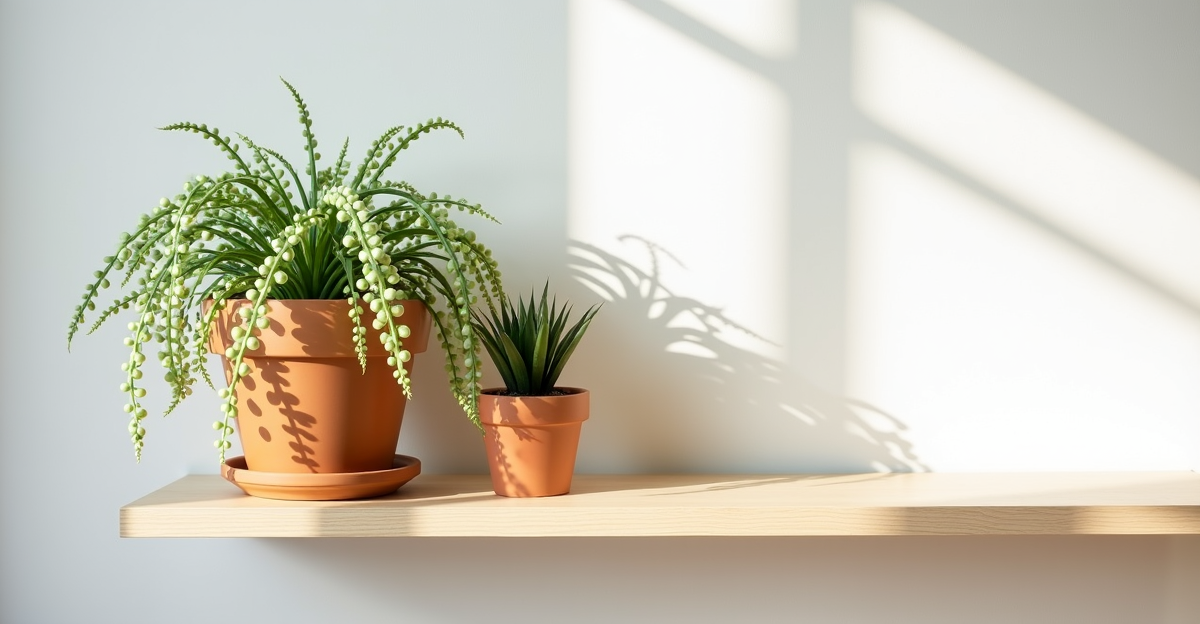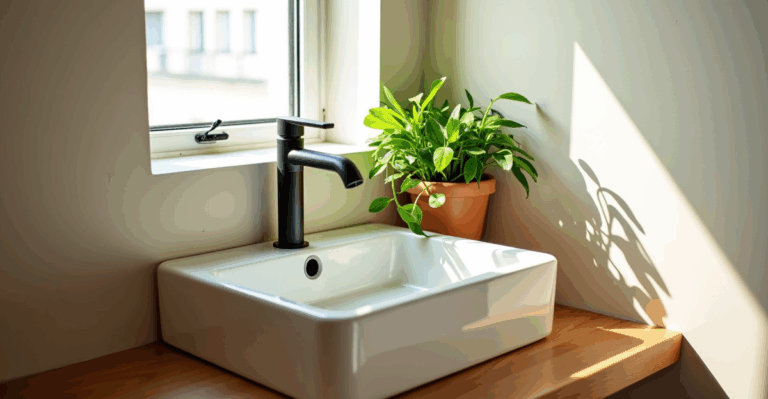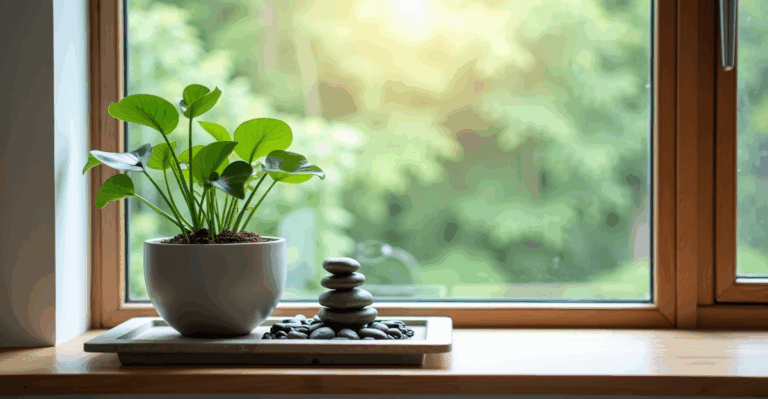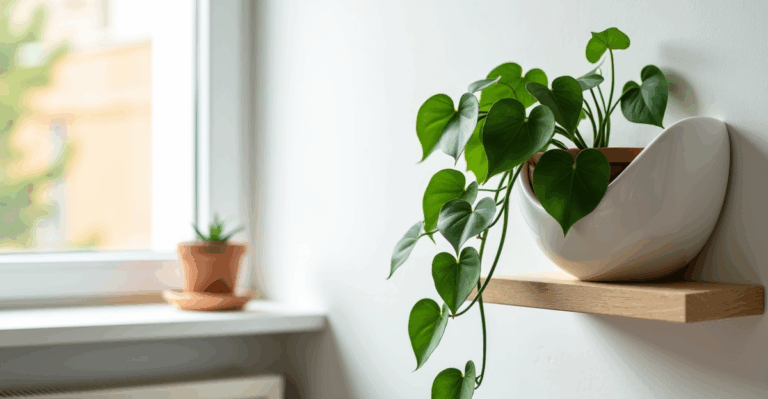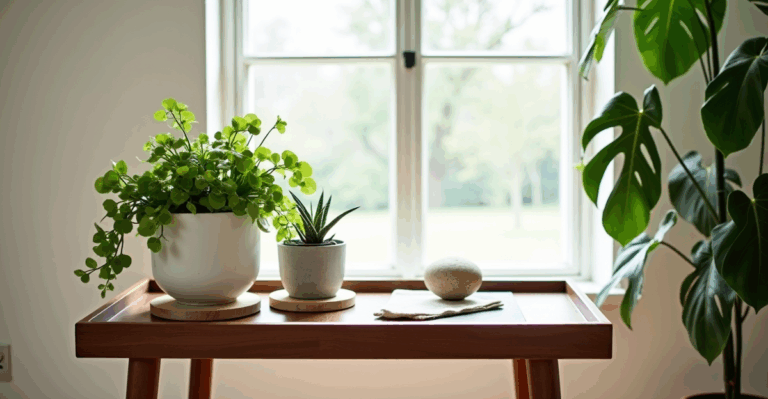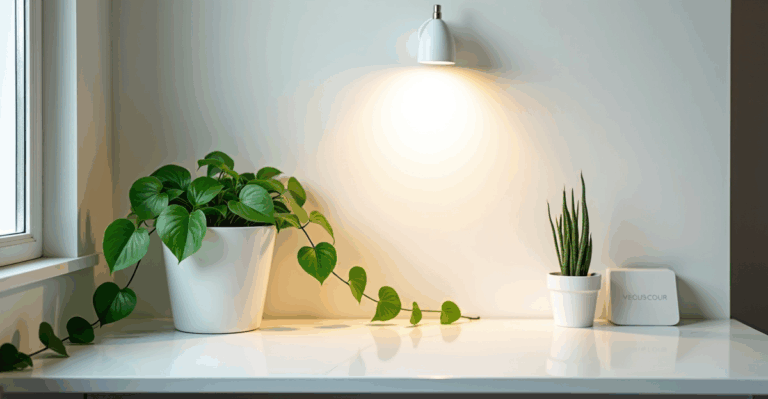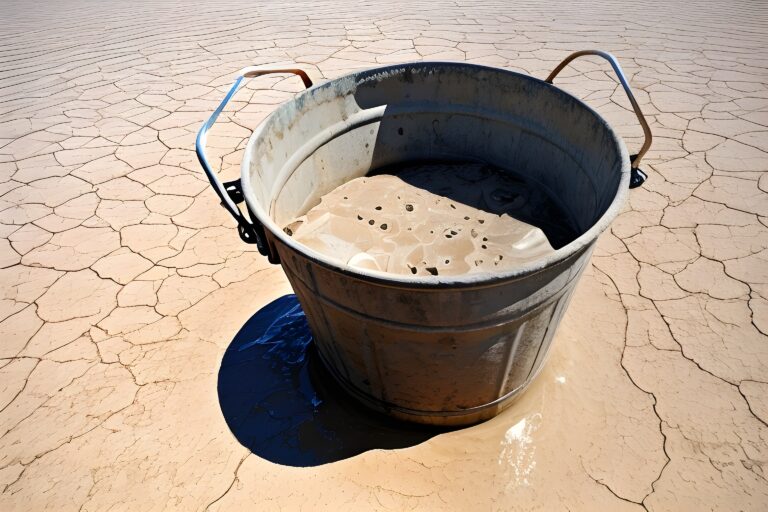String of Pearls: Plump Beads Without Shrivel
Picture this: You’ve just bought that stunning String of Pearls (Senecio rowleyanus), its tiny, plump green beads cascading from a pot like a living necklace. You place it on your bright east-facing windowsill, excited to style it with your other plants. A week later, you notice a few beads looking sad and shriveled. Panic sets in—you watered it just like your other plants! But the pearls keep shrinking. That’s the heartbreak of String of Pearls care: it’s not about how much water you give, but when and how you give it. And the culprit? Overwatering disguised as love.
We’ve all been there. That little succulent-looking vine seems to need moisture, especially when its beads look a little less perky. But String of Pearls is a desert dweller, not a tropical fern. Its roots are fragile, and soggy soil is its true enemy. The secret to those perfect, plump beads isn’t just watering—it’s letting the soil completely dry out between sessions. It’s a rhythm, not a routine. And it shifts with the seasons, your home’s humidity, and even the pot you’ve chosen. Let’s untangle this together.
Why “Just Water It” Fails (And What Actually Works)
Most people treat String of Pearls like a typical houseplant—watering when the top inch feels dry. But that’s a recipe for shriveling. These plants need deep, thorough drying. The top 2–3 inches of soil must be bone-dry before you water again. Why? Their shallow root system is built to absorb moisture quickly from infrequent rain, not constant dampness. In a south-facing living room with dry winter air, this might mean watering every 3–4 weeks. In a humid bathroom with low light, it could be 6+ weeks. There’s no universal schedule. It’s about feeling the soil, not a calendar.
We’ve seen countless plants shrivel because the owner followed a generic “water when dry” rule without understanding how dry. We’ve also seen folks accidentally drown their plants by using a self-watering pot. It’s tempting, but the constant moisture is a death sentence. Instead, we stick to pots with excellent drainage—no exceptions.
The Planter Choice Makes or Breaks Your Beads
This is where most advice misses the mark. We talk about “well-draining soil,” but the pot is the drainage system. A standard ceramic pot with tiny holes? It holds moisture like a sponge, especially in low light. A terra cotta pot? It dries faster, but can still trap water if the hole is blocked by roots or soil. And yes, LECA (clay pebbles) can work, but it requires a very specific watering technique: drench the LECA until water drains out, then wait weeks before repeating. Most folks just water too often, even in LECA.
The real solution? A pot designed for succulents. Not just any pot with a hole—one with a hole large enough and positioned so water flows out freely, not pooling at the bottom. That’s where our 3D-printed planters come in: the precise drainage holes prevent water from sitting, and the smooth interior avoids root tangling that traps moisture. We’ve tested them with String of Pearls for two years, and the difference in bead plumpness is visible within weeks. No more guessing if your pot is “draining well” because it’s engineered to be well-draining.
Real-Life Scenarios: Your Space, Your Plant
Scenario 1: The North-Facing Bedroom (Dry Air, Low Light)
You’ve got a String of Pearls on a north window. It gets soft, indirect light all day but no direct sun. The air is dry from winter heating. Your instinct: Water more often. The reality: The low light means slower drying. Wait until the soil is completely dry (use a skewer to check depth). Water thoroughly, then let it sit on a tray for 10 minutes to drain all excess—no more sitting in water. Your pot choice here is critical: A terra cotta pot would dry too fast, risking root desiccation. A standard ceramic pot might hold too much water. A 3D-printed pot with balanced drainage is ideal—it dries at the right pace for your light levels.
Scenario 2: The Sun-Drenched Kitchen (South Window, Bright Light)
Your plant gets bright, direct light for 4–5 hours in the morning. The soil dries incredibly fast. Your instinct: Water every 7 days. The reality: It might need water every 10–14 days. Check the soil, not the clock. If it’s still moist at 2 inches deep, wait. A pot with good drainage (like our 3D-printed style) ensures you can’t accidentally overwater even when you’re tempted by the light. And if you do water too soon, the pot’s drainage will save it—unlike a pot with tiny holes where even a little extra water causes rot.
Edge Cases & What to Watch For
Low Light + Overwatering = A Double Trap
In dim spaces (like a basement office), String of Pearls grows very slowly. Watering on a schedule (e.g., “every week”) will drown it before it uses the moisture. Fix: Check soil moisture twice a week in low light. In winter, you might water once every 6 weeks. Trade-off: You’ll see slower growth, but your plant will stay alive and plump.
Hard Water = Mineral Buildup
If you live in a hard water area, regular watering leaves white crust on soil and pots. This clogs drainage holes. Fix: Every 2–3 months, flush the pot with distilled water until it runs clear. Trade-off: It’s a chore, but skipping it leads to root rot. A pot with a wide drainage hole (like our 3D design) makes flushing much easier—no need to dig out crusty soil.
Pests Love Wet Soil
Fungus gnats thrive in constantly moist soil. Fix: Let the soil dry completely between waterings. Trade-off: You might see temporary bead shriveling as it dries, but it’s worth it for pest prevention. A pot with excellent drainage stops gnats from hatching in the first place.
Styling Without Sacrificing Health
You want to hang that String of Pearls in a macramé planter, but the pot is too big and the drainage is poor. Or you love the look of a ceramic cachepot but hate that it holds water. We get it. But styling shouldn’t compromise care. Here’s how to do both:
- Hanging Planters: Use a small, well-draining pot inside a decorative hanging planter. Place a saucer under the inner pot to catch drips. The inner pot must have drainage—no exceptions. Our 3D-printed pots work perfectly here: lightweight, with drainage, and the smooth finish fits seamlessly into any hanging style.
- Shelf Displays: On a bookshelf with low light? Place your String of Pearls in a 3D-printed pot on a raised plant stand (not directly on the shelf). This improves airflow under the pot, preventing moisture buildup. The pot’s clean lines also complement minimalist displays.
- Wall Planters: Avoid traditional wall-mounted planters—most lack drainage. Instead, use a 3D-printed pot with a hanging loop, mounted on the wall with a secure hook. The pot’s weight is even, and drainage is guaranteed.
The Takeaway: Patience is the Secret Ingredient
String of Pearls doesn’t grow fast. It’s not about rushing to see beads. It’s about waiting for the perfect moment to water. It’s about trusting your hands to feel the soil, not your eyes to see the beads. It’s about choosing a pot that works with the plant, not against it. When you get the rhythm right—letting it dry, watering thoroughly, using the right pot—you’ll see those beads swell, round, and glow with health. Not shrivel. Not fade. Plump.
We’ve grown dozens of String of Pearls over the years, and the single most reliable factor? The pot. It’s the foundation. That’s why we use our 3D-printed planters in our own home setups—they’re the quiet, functional piece that makes the care rhythm work without drama. They fit your style, not the other way around.
We use these in our own setups, and they’re a joy to style—discover our 3D-printed planters.
Key Takeaways
– Water only when soil is completely dry (top 2–3 inches).
– Drainage isn’t optional—it’s non-negotiable for healthy beads.

